Mid June 2007, one of my best friends was getting married in France. For his wedding day, I decided that I should give a try with flash photography for low light conditions. So I bought a Sigma EF-500 DG ST, an E-TTL only flash. Having no clue on how to properly use a Flash gun using E-TTL, I started to look for a good tutorial on the web. One of them was linking to a blog called Strobist. That was the start of an addiction. I couldn't stop reading that great blog that teaches you all you need to know about off-camera flash photography. My issue then was that my Sigma flashgun was E-TTL only and the blog is mentionning about using manual flash to have full control on your work. So after the wedding I sent the flashgun back to the shop for an exchange for the Sigma EF-500 DG Super which allows manual control of the flash.
November 2007, the EHHPS (a local photographic society here in Ealing) was organizing what they call "Panel of Prints Competition". As its name indicates it's a competition where you present a panel that has to be composed of at least 3 and up to 6 images that have to be linked by a same subject or that are telling a story. So one night, coming back from work on the bus, I was trying to think of what to shoot for this competition. It was the time where "painting with light" photographs was flourihing on the web. The idea was in my head for quite a while already, but I didn't want to do something that has already been done so many times and wanted to add something more to it: "what about mixing two techniques to it? A off-camera lit self-portrait and painting with light?". That sounds cool to me and few ideas started to grow as I nearly missed the bus stop....
When taking a portrait, the most important thing in your picture is the main subject. The background should be cool but the subject should be the main focus. You need to separate your subject from the background by, for example, narrowing the depth of field to blur it, restrict the flash light with a grid spot so it only light the subject and leave the background to the ambiance light or throw the background to some motion blur and maintaining the subject acceptably sharp.
This technique does not require you to own a fast lens (with great aperture), you don't even need a moving background, but you need to own an external flash gun triggered off-camera. It will help you make the background less obvious by bluring it in a stylish way and also create some special mood to the picture.
Learning to light your pictures with flashguns is a great skill to have. These very portable light sources are very handy and put in a camera bag they become available light. Whenever you lack of light or the natural light needs some complement, just take your speedlight and make the magic happens.
One of the most important thing in taking photographs with flash is not only what you are lighting but mostly what you are not.
We often need to separate our subject from the background, make it stands out from distracting elements in the scene. For photographers using only natural light, there is the depth of field (DOF) that allows the isolation of the subject from the background scene by creating a blurr also called bokeh. This can be achieve by using a lens that has a wide aperture (smallest aperture value) like f/2.8, f/1.8 etc... the wider the aperture, the more blurr you can create without going too close to the subject. But for photographers using flash in their work, very often they need to use a small aperture when shooting outdoors due to the fact that the use of flash restrict your shutter speed to a max value of 250th sec (can be different depending on the camera). The brigthness of the ambiance and this max shutter speed make you need to close the aperture to expose the ambiance properly and thus loose the bokeh. So how can you make the subject stands out?
Ever woke up on a Sunday morning feeling bored and wondering what you can do? Then you want to go out and take some pictures but drawing the curtains just reveals a dull and depressive cloudy day. Well I can tell you this happens to me quite regularly here in London... But what can you do? I can say bye to everything here and go back to Montpellier in the south of France or back to my parents there in New Caledonia that wonderful tropical island. But I can also accept Frank's invitation to go by the coast and instead of staying at home vegging out in front of the telly...
Since about June 2007 I've followed on a nearly daily basis the evolution of Strobist, a blog setup by David Hobby, an ex photo journalist working for the Sun in the US. In a friendly and simple way, David Hobby is teaching you how to use small and portable flashguns to the maximum of their possibilities and achieve high quality photographs. The Strobist blog is reinforced by a Strobist Flickr Group where the blog readers could participate in the group discussion threads and posting their work into the group's photo pool and get comments and critics.
I remember going thru several pictures of skateboarders, cyclist... doing high jump with a great sky in the background. This made me want to get some similar photographs. So, with my wife, we started a serie on our trip to the Isle of Wight.
"Flickr labs have been hard at work creating a way to show you some of the most awesome content on Flickr. We like to call it interestingness."
Another of my recent photographs has made its way up to the Flickr Explore Interestingness page. Unfortunately Flickr Explore algorithm is still a mystery, but it looks like that if you submit to too many groups your picture is more likely to be dropped out, but it will get back in if you receive enough comments/faves.
This photograph pictured Frank Williams one of my photographer mates. I went to his place last weekend to practice and test new techniques. We ended up with an outdoor session trying a three speedlights setup in his residential parking. As the sun goes down, the sky was getting dark and dramatic. Playing with the aperture and the shutter speed, I could control the exposure of the ambiance and the one on Frank separately, this is really great as I can decide whether I want the ambiance darker or brighter when maintaining the correct exposure on my subject.
I would then in post-processing fine tune the colors, contrast and lighting and do some editing such as leaves on the face etc..
So you think good studio photography needs an expensive studio and expensive gears? Think again!
The portrait on the left has been taken in a little cottage up in Snowdonia (Wales). I've had a break there with my wife and her mum. On the day we had planned to go out shooting some portraits for them, it was raining cats and dogs! So we had to go back to the cottage and have some tea and biscuit. But I didn't want to end the day without any picture, so we decided to turn the cottage's living room in a budget home photography studio and use what is available as backdrop. So here I was using the doors, kitchen and white wall and my standard strobist kit.
« Previous 1 2








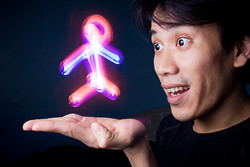
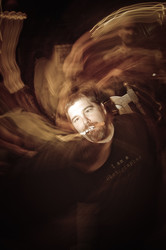
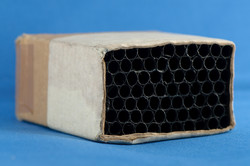
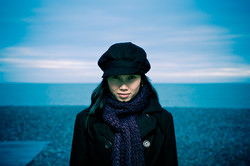
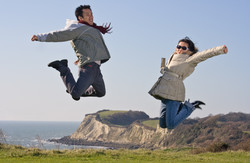
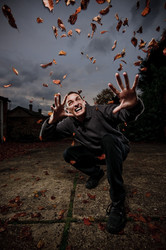
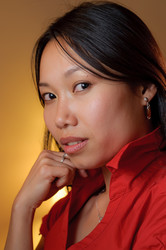
View comments (7)